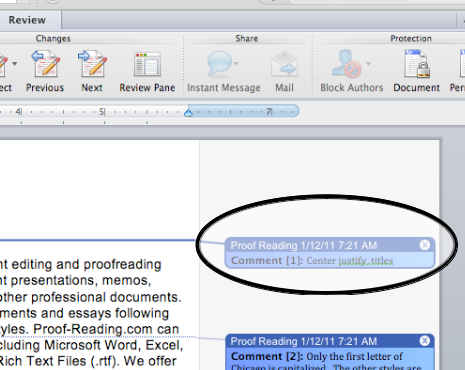

I'm going to go to Shell, and Show Inspector, and switch to one of these other profiles here. Let's change it to something a little easier to look at. Let me show you the most basic commands to get you started.Īlright, so let's launch Terminal and it's going to give us this default window. So if you've ever wondered if there's a way to type instead of drag and drop to access your files, well there is! You can use the Terminal to access your files, your folders, work with them, rename them, move them around, open them, and do almost everything you could do in the Finder except by typing instead of using the cursor. There you can read more about it, join us and get exclusive content. MacMost is brought to you thanks to a great group of supporters. Let me show you how you can work with your files in the Terminal instead of the Finder.
EDITING WORD DOCUMENT IN MAC MAC
And if you also create documents in Pages, take a look at these keyboard shortcuts for Pages on Mac.Check out Using Terminal Commands As An Alternative To The Mac Finder at YouTube for closed captioning and more options. You can customize keyboard shortcuts for Word too. So bookmark the page, and the next time you start composing or editing a document in Microsoft Word, you can complete your tasks much quicker. Like our other keyboard shortcuts lists, this one for Word on Mac is great to have at your fingertips. Show the shortcut menu for a selected item: Shift + F10.Show the Spelling and Grammar dialog box: F7.Insert an endnote: Command + Option + E.Insert a footnote: Command + Option + F.Switch between the first line of body text to show all body text: Control + Shift + Lįor other keyboard shortcuts that don’t fit into the above sections but are handy to keep in mind, check these out:.Expand or collapse body text and headings: Control + Shift + A.Demote the paragraph to body text: Command + Shift + N.Demote the paragraph: Control + Shift + Right arrow.Promote the paragraph: Control + Shift + Left arrow.The following shortcuts are convenient when you use Outline view in Word: Insert images with the Media Browser: Command + Control + M.Paste copied formatting: Command + Shift + V.Copy selected formatting: Command + Shift + C.Show the Paste Special dialog box: Command + Control + V.Paste and match formatting: Command + Option + Shift + V.Paste selected items: Command + V or F4.Some of these are probably already familiar to you, while others might be completely new! Once you select text or a graphic, use the following keyboard shortcuts to edit it. From the cursor’s current spot to the bottom of the screen: Shift + Page Down.From the cursor’s current spot to the top of the screen: Shift + Page Up.From the cursor’s current spot to the end of the document: Command + Shift + End.From the cursor’s current spot to the start of the document: Command + Shift + Home.From the cursor’s current spot to the end of the paragraph: Command + Shift + Down arrow.From the cursor’s current spot to the start of the paragraph: Command + Shift + Up arrow.From the cursor’s current spot to the end of the line: Command + Shift + Right arrow or Shift + End.

From the cursor’s current spot to the start of the line: Command + Shift + Left arrow or Shift + Home.A word to the left: Shift + Option + Left arrow.A word to the right: Shift + Option + Right arrow.To the previous insertion point: Shift + F5įor working with text and graphics in Word, you can use these keyboard shortcuts for selecting items.To the end of the document: Command + End or Command + Fn + Right arrow.To the beginning of the document: Command + Home or Command + Fn + Left arrow.To the top of the previous page: Command + Page Up or Command + Fn + Up arrow.To the top of the next page: Command + Page Down or Command + Fn + Down arrow.Down one paragraph: Command + Down arrow.To the end of the line: Command + Right arrow.To the beginning of the line: Command + Left arrow.Give your mouse and trackpad a rest because you can navigate your Word documents easily with these shortcuts. 6) Using Microsoft Word keyboard shortcuts Moving around your document


 0 kommentar(er)
0 kommentar(er)
